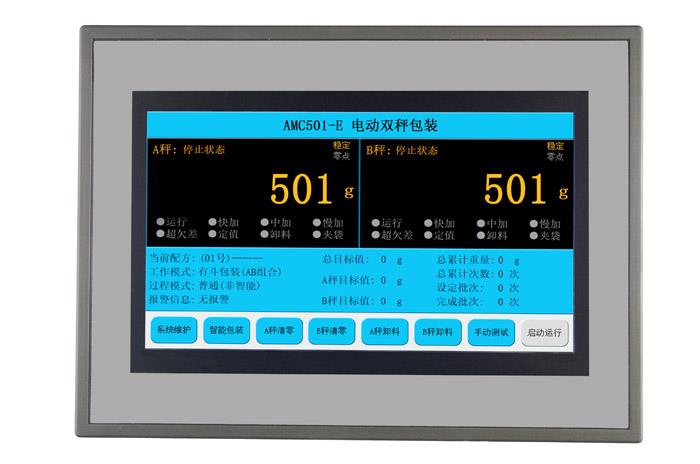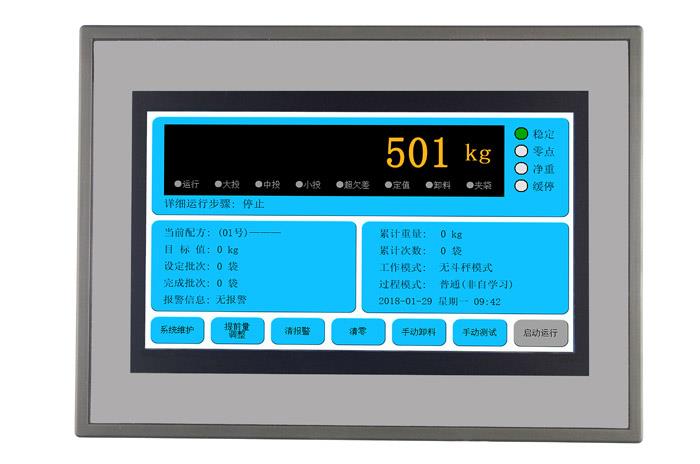
2019-08-18
Teach you how to choose the right force measuring instrument
The force measuring instrument is composed of a sensor and a microprocessor (microcomputer) phase structure. It makes full use of the computing and storage capabilities of the microprocessor and can process sensor data, including measurement signal conditioning, data display, automatic correction and automatic compensation.
Microprocessor isDynamometerAt its core, it can not only calculate, store and process the measurement data, but also adjust the sensor through a feedback loop to make the collected data optimal. Because the microprocessor has various software and hardware functions, it can perform tasks that are difficult for traditional transmitters. The completed task. Therefore, the force gauge reduces the manufacturing difficulty of the sensor and improves the performance of the sensor on a large scale.

Dynamometers also have the following characteristics
1. With automatic compensation capability, it can automatically compensate for nonlinearity, temperature drift, time drift, etc. The software of the sensor. It can perform self-diagnosis. After power-on, the sensor can be self-checked to check whether each part of the sensor is normal and make judgments. Data The processing is convenient and accurate, and the data can be automatically processed according to internal procedures, such as statistical processing, outlier elimination, etc.
2. It has two-way communication function. The microprocessor can not only receive and process sensor data, but also feedback information to the sensor to adjust and control the measurement process. It can store and memorize information, and can store sensor characteristic data, configuration information and compensation characteristics .
3. It has a digital interface output function, which can easily connect the output digital signal with a computer or field bus.
Dynamometers are commonly used dynamometers in our daily life. The principles and structures of dynamometers are very different. How to
Reasonable selection of dynamometer for measurement object and measurement environment is the first problem to be solved when measuring a certain amount. In determining the high-precision dynamometer sensor
After that, the corresponding measurement methods and measurement equipment are also determined. The success or failure of the measurement results depends to a large extent on whether the selection is reasonable. The selection of force measuring instruments should be considered from the following points:
1. Sensitivity selection
In general, in the linear range, the higher the sensitivity, the better. Because only when the sensitivity is high, the value of the output signal corresponding to the measured change is larger, so
Good for signal processing. However, it should be noted that if the sensitivity of the sensor is high, external noise unrelated to the measurement can easily be mixed in and amplified
The system amplifies and affects the measurement accuracy. Therefore, the sensor itself is required to have a high signal-to-noise ratio to minimize the interference signal introduced from the outside.
Sensitivity is directional. When it is measured as a single vector and the directional requirement is high, the sensitivity of other directions should be selected to be smaller.
Measurements are multidimensional vectors, and the less cross-sensitivity the better.
2. According to the measurement object and measurement environment
To determine the type of sensor to carry out specific measurements, we must first consider the principle to be adopted, which needs to be determined after analyzing various factors. This is because
is to measure the same physical quantity, and there are many principles to choose from. Depending on the characteristics of the measurement and the conditions of use, the following need to be considered
Specific questions: the size of the measurement range; the volume requirements of the measurement location; the measurement mode is contact or non-contact; signal extraction method, wired or non-contact
Contact measurement; the source of the sensor, domestic or imported, whether the price is affordable, or self-developed
After considering the above issues, we can decide which type to choose, and then consider the specific performance indicators of the high-precision dynamometer sensor.
3. Linear range\/hour\/linear range refers to the range in which the output is proportional to the input. Theoretically, within this range, the sensitivity remains unchanged. The wider the linear range, the more
The larger the range is, and a certain measurement accuracy can be ensured. When selecting a high-precision dynamometer sensor, when determining the type, the first thing to look at is whether its measurement range meets the requirements.
But in fact, no sensor can guarantee absolute linearity, and its linearity is also relative. When the required measurement accuracy is relatively low, in a certain
Within the range, small nonlinear errors can be approximately regarded as linear, which will bring great convenience to the measurement.
4. Frequency Response Characteristics
The frequency response characteristic determines the frequency range to be measured and must remain within the allowable frequency range without distortion. In fact, there is always a certain delay in the response. I would prefer the shorter the better.
The higher the frequency response of the high precision dynamometer sensor, the wider the frequency range of the measurable signal
In dynamic measurements, the response characteristics should be based on signal characteristics (steady-state, transient, random, etc.) to avoid excessive errors
After considering the above points, confirm the sensor model, then connect the sensor to the dynamometer, and after calibration, it can be used normally. The sampling frequency can be determined according to
At the same time, the dynamometer can automatically store the peak value. If necessary, it can be connected with a computer for communication and storage of data, etc.

1 10, 2025

1 10, 2025